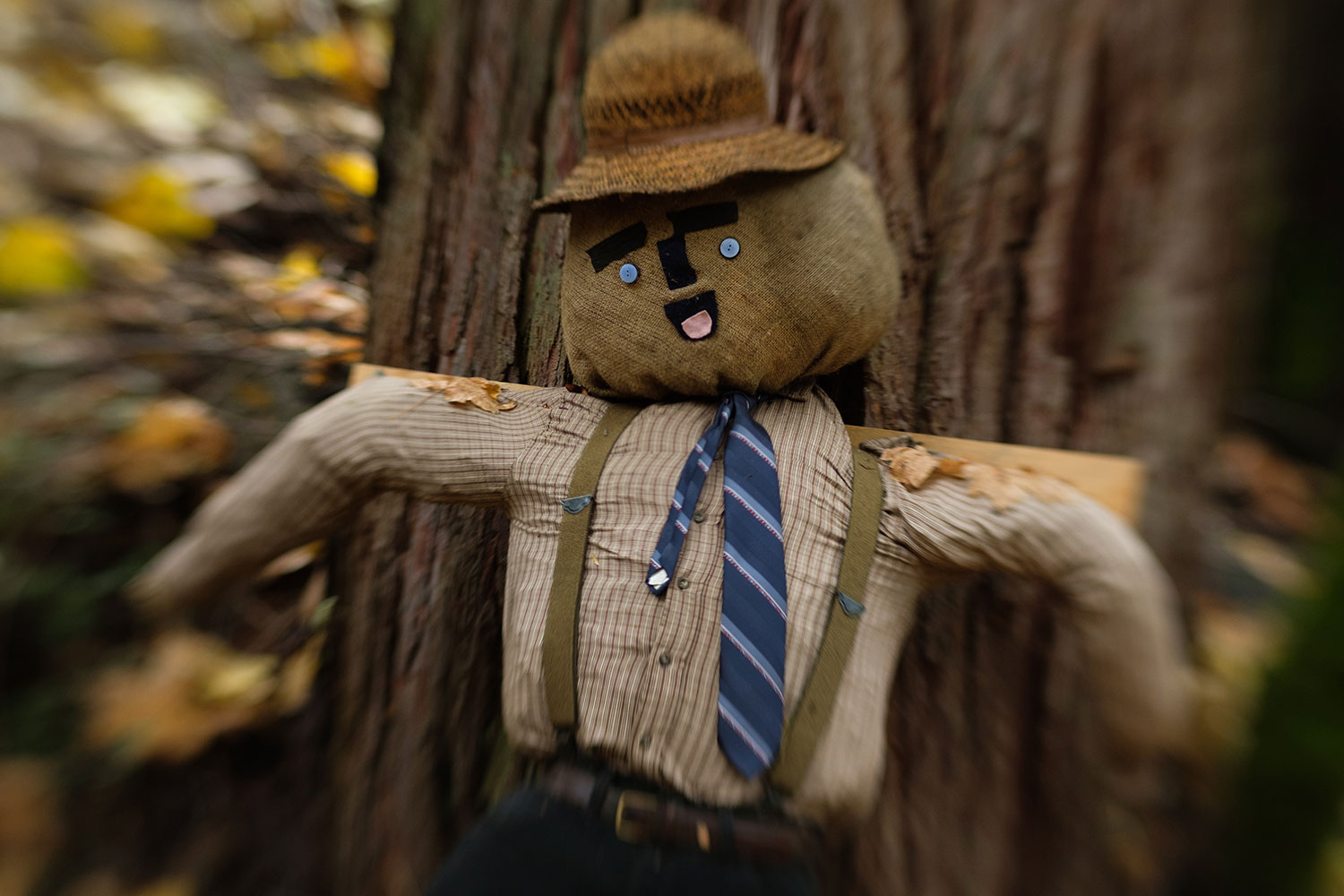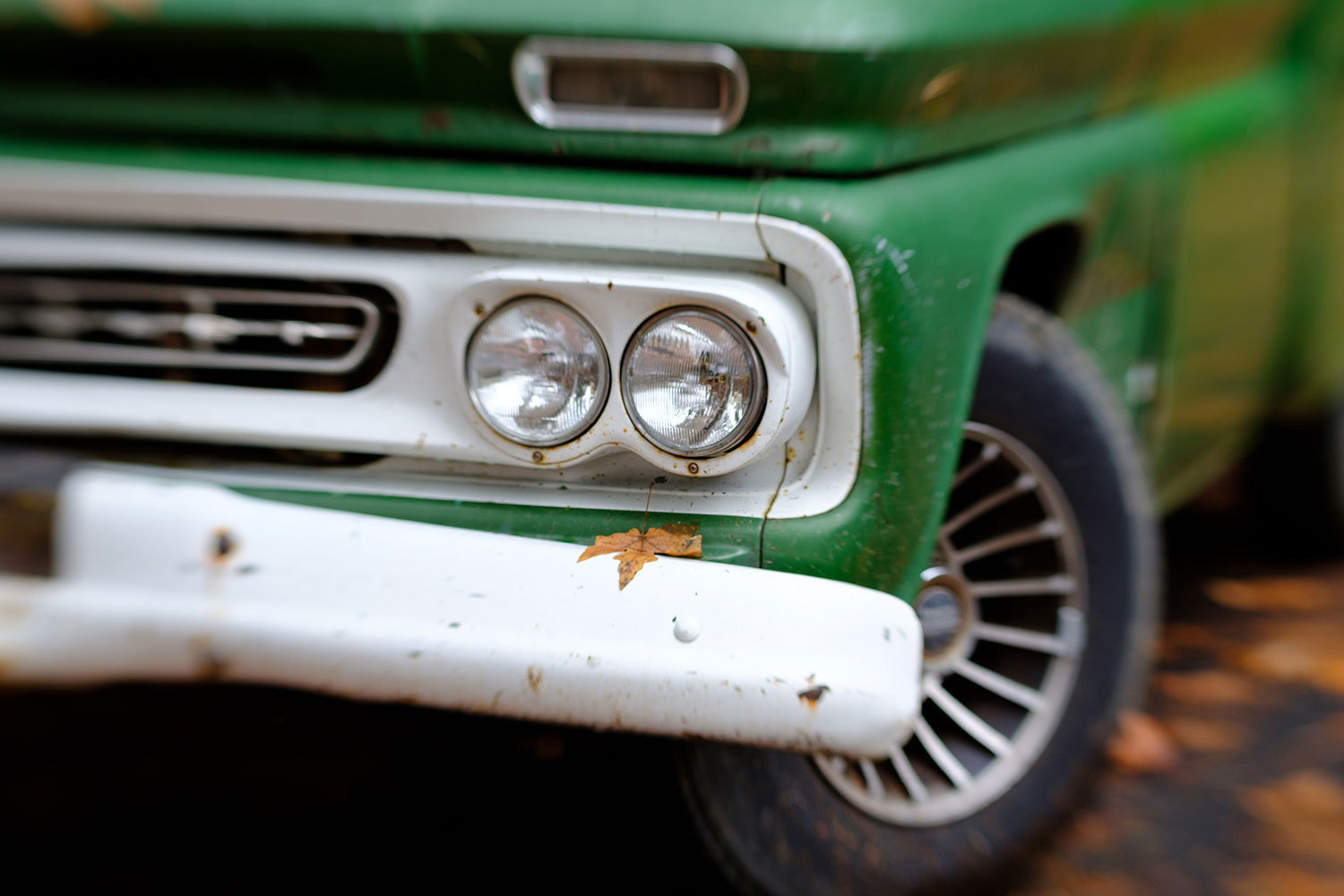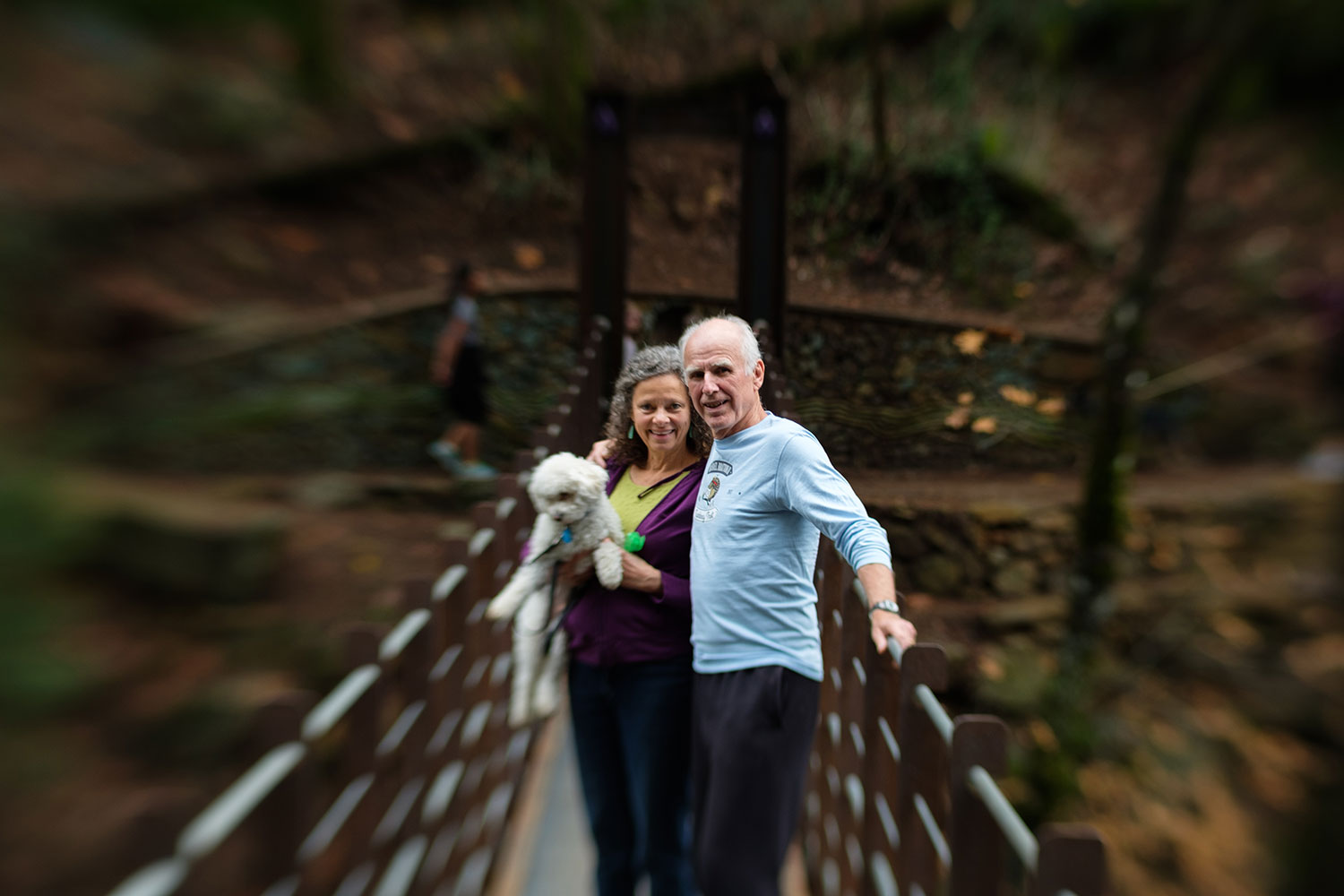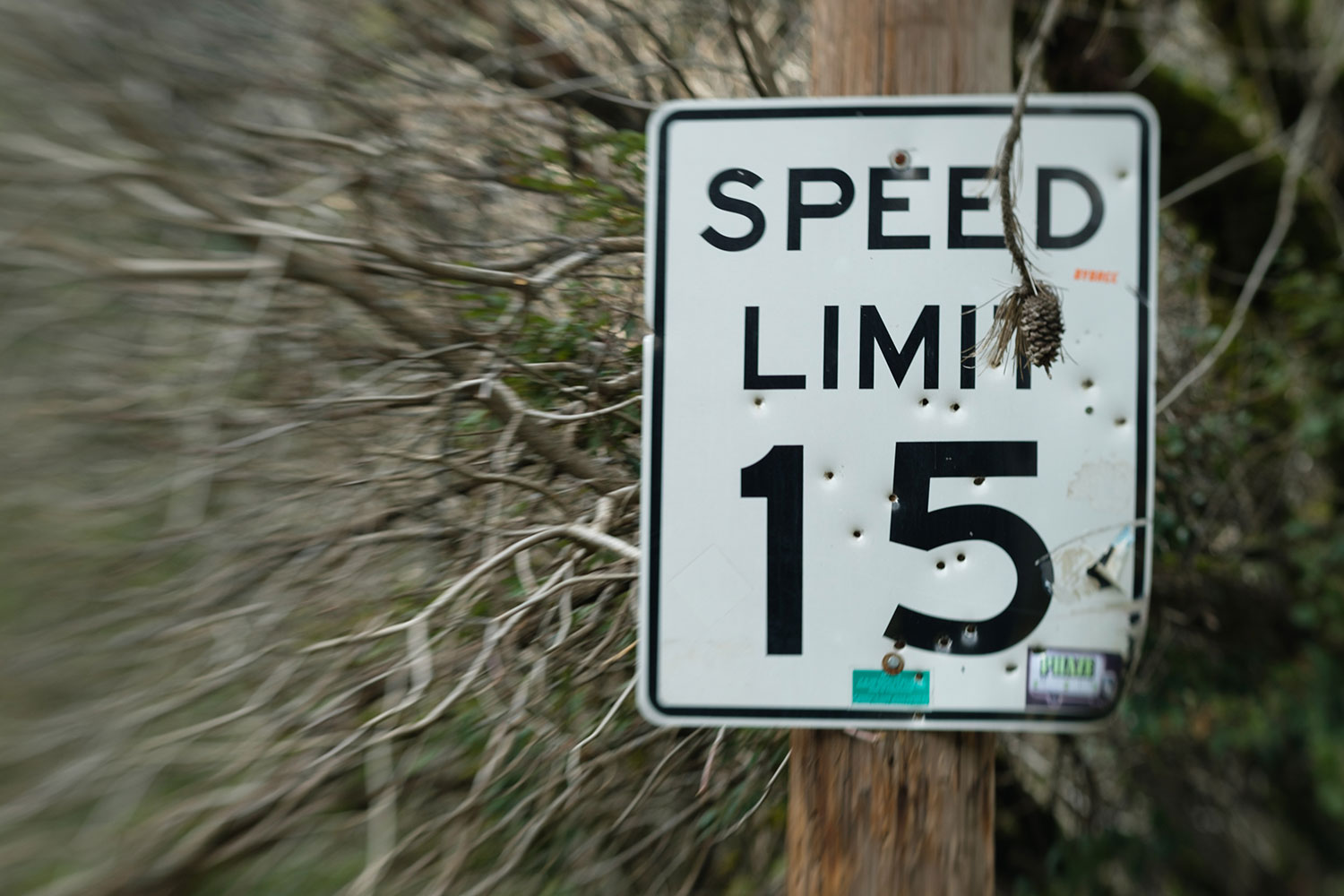- Great “sweet spot” effect
- Internal, 12-blade aperture
- Compact design
- Solid build quality
- Steep learning curve
- No EXIF metadata
One of the key characteristics of the best portrait lenses is their ability to achieve shallow depth of field. Many modern lenses are engineered to be tack sharp even when shot at their widest apertures, so using shallow depth of field to separate your subject from the background doesn’t carry the same sharpness penalty it once did (never mind the fact that most of the photos we look at today are on small phone screens). But there are other ways of drawing attention to your subject, something that Lensbaby users have been aware of for some time.
The Lensbaby Sweet 80 ($200, $380 with Composer Pro II) is the newest lens for the company’s optic swap system, and the first that brings the classic “sweet spot” of focus to a true portrait focal length. Lensbaby optics have long been used for portraiture (and the company makes standalone lenses like the Velvet 85 expressly for that purpose), but the focal lengths of the older Sweet 35 and Sweet 50 were not as narrowly tailored to the task.
That’s not to say the Sweet 80 doesn’t have other uses. While conducting this review, we found it to be a surprisingly versatile lens — even when mounted on a Fujifilm X-T2 with an APS-C sensor, giving the lens an effective focal length of 120mm. The relatively small size and light weight make it easy to pack with you, and there are plenty of subjects out in the world beyond faces that benefit from the Sweet 80’s unique ability to hone in on one area of focus within the frame.
Design and specifications
The Sweet 80 follows in the footsteps of the Sweet 35 and Sweet 50 before it. It is a compact lens with a relatively simple optical design that uses just four elements in two groups. It features an internal aperture (older Lensbaby optics used drop-in aperture disks) with a somewhat limited f-stop range of f/2.8 to f/16, but this works well for the intended use case. Like other Sweet optics, the aperture diaphragm itself boasts twelve blades, which provide circular out-of-focus blur and help smooth out the transitions from in focus to out of focus areas.
Being a Lensbaby, it is available in a wide variety of mounts, including Canon, Nikon, Sony (both A and E), Fujifilm, Micro Four Thirds, Pentax, and even Samsung NX (may it rest in peace). It is full-frame compatible, while it provides a 120mm equivalent field of view on APS-C bodies and a 160mm equivalent field of view on Micro Four Thirds.
The Lensbaby user experience
If you are new to the Lensbaby optic swap system, it’s worth an explanation of how it works. The “lens” is actually two parts: a housing — it mounts to your camera body and contains the tilt and focus controls — and the optic itself, on which you’ll find the aperture ring. Our Sweet 80 review unit came kitted with the Composer Pro II housing, but if you already own a Composer you can purchase the Sweet 80 by itself.
Many subjects benefit from the Sweet 80’s ability to hone in on one area of focus within the frame.
The Sweet-series lenses are so named because they produce a “sweet spot” of focus, a single area of sharpness surrounded by blur that grows increasingly strong the farther away it is from the sweet spot. The size of the sweet spot is controlled via the aperture; wide open, you have a very small area of focus, whereas stopped down, you can more or less get sharp focus across the entire frame.
The vertical and horizontal position of the sweet spot is controlled by the tilt. You can move the sweet spot around the frame by “pointing” the lens in that direction, meaning it isn’t limited to just the center — you can zero in on subjects in one corner of the image if you want to.
Finally, the focus ring is responsible for focusing on the correct depth, just like a traditional lens — except that this one is fully manual, with no autofocus to help you out.
You can begin to see how working with the optic swap system can be complicated. Simply achieving focus now requires three steps: focus (in the traditional sense), sweet spot position, and sweet spot size. (We should add that standard depth of field practices still apply here, as well.) If any one of these is not set properly, your subject will look soft. It can be a frustrating experience in the beginning, but like anything, practice makes perfect. Try it out on static subjects first, focusing on different points in the frame, at different depths, and at different apertures until you get a feel for it.
The Sweet 80 complicates things somewhat because of its longer focal length, which makes it more difficult to hold steady. For these reasons, shooting it is easiest when using a tripod and live view, where you can punch in to preview the shot and make adjustments without moving the camera.
Image quality and usability
With mantras like “embrace the blur” and “we are the enemy of perfection,” we don’t exactly expect Lensbaby lenses to put up class-leading performance in the conventional sense. That said, it is possible to get sharp photos with the Sweet 80 — it’s just not easy.
The Sweet-series lenses are so named because they produce a “sweet spot” of focus.
In our experience, we ended up with more than a few images where the subject was just slightly soft. More often than not, however, this was due to user error. Again, nailing perfect focus with this lens is an art form unto itself. Still, especially with a wide open aperture, critical sharpness is limited to a very small area within the sweet spot, and blur and chromatic aberration creep in quickly. You may think your subject is sharp when looking at the whole image, but punch in to 100 percent and you may find that’s not the case.
More important, however, are the subjective qualities that the Sweet 80 brings to the table. It turns crowded backgrounds into pleasing, painterly colorscapes while simultaneously spicing up flatter backgrounds and making them a little more interesting. It can draw your attention to the subject or lead your eye into a scene. It’s a great effect, albeit one that is perhaps best used sparingly (e.g., don’t be afraid to use it at a wedding, but don’t photograph the entire wedding with it).
Additionally, the move to an 80mm focal length brings a slight amount of compression distortion, a look generally considered flattering to human subjects (which is another reason why we often see lenses in the 80-150mm range as being good for portraiture).
The f/2.8 maximum aperture is not terribly wide for a portrait lens, but combined with the sweet spot effect, it does plenty to separate your subject from the background. In fact, we preferred to shoot in the range of f/4 to f/5.6 just to keep the sweet spot a little more manageable. The 12-bladed iris is also a nice touch, providing round bokeh circles even when stopped down. You simply don’t see this many aperture blades in standard photographic lenses — nor anywhere close to this price point — and while it’s perhaps a small benefit, it’s a unique one, nonetheless.
Warranty
Lensbaby offers a one-year warranty on all of its products.
Our Take
Like Lensbaby’s other lenses, the Sweet 80 fills a small niche that won’t necessarily appeal to every photographer. It is, however, an incredibly unique lens that is both challenging and fun to use. For photographers who prefer to get it right in-camera, rather than resorting to digital filters and effects, it is hard to argue against it. It takes some time to get used to, but the Sweet 80 makes for some stunning results when you get it right, which will help your images stand out both in print or simply in your Instagram feed. Keep in mind, as an entirely manual lens, there is no electronic communication with your camera body — EXIF metadata (focal length, aperture) will not be saved along with your images.
Is there a better alternative?
Again, this isn’t the type of lens for everyone, so a basic 85mm portrait lens may be better for you. However, there really is no direct comparison to Lensbaby’s lineup. The closest true competitor to the Sweet 80 is simply the Sweet 50. The latter may be the better choice for users of crop-frame cameras, but this is still subjective. (The Sweet 50 is also cheaper, at just $300.)
How long will it last?
One of the great things about the all-mechanical nature of Lensbaby’s optic swap system is that there is very little that can go wrong. If treated well, the components should last a very long time, but they are not dust or weather sealed, so keep that in mind. Additionally, if you decide to change camera systems, all you need is a new Composer — you can continue to use all of the same optics.
Should you buy it?
At just $380 with the Composer Pro II or $200 by itself, it’s hard to say no. For anyone after a unique, in-camera creative effect — particularly portrait photographers — the Lensbaby Sweet 80 is a great addition to your toolset. If this is your first Lensbaby, just be prepared for a steep learning curve.
















